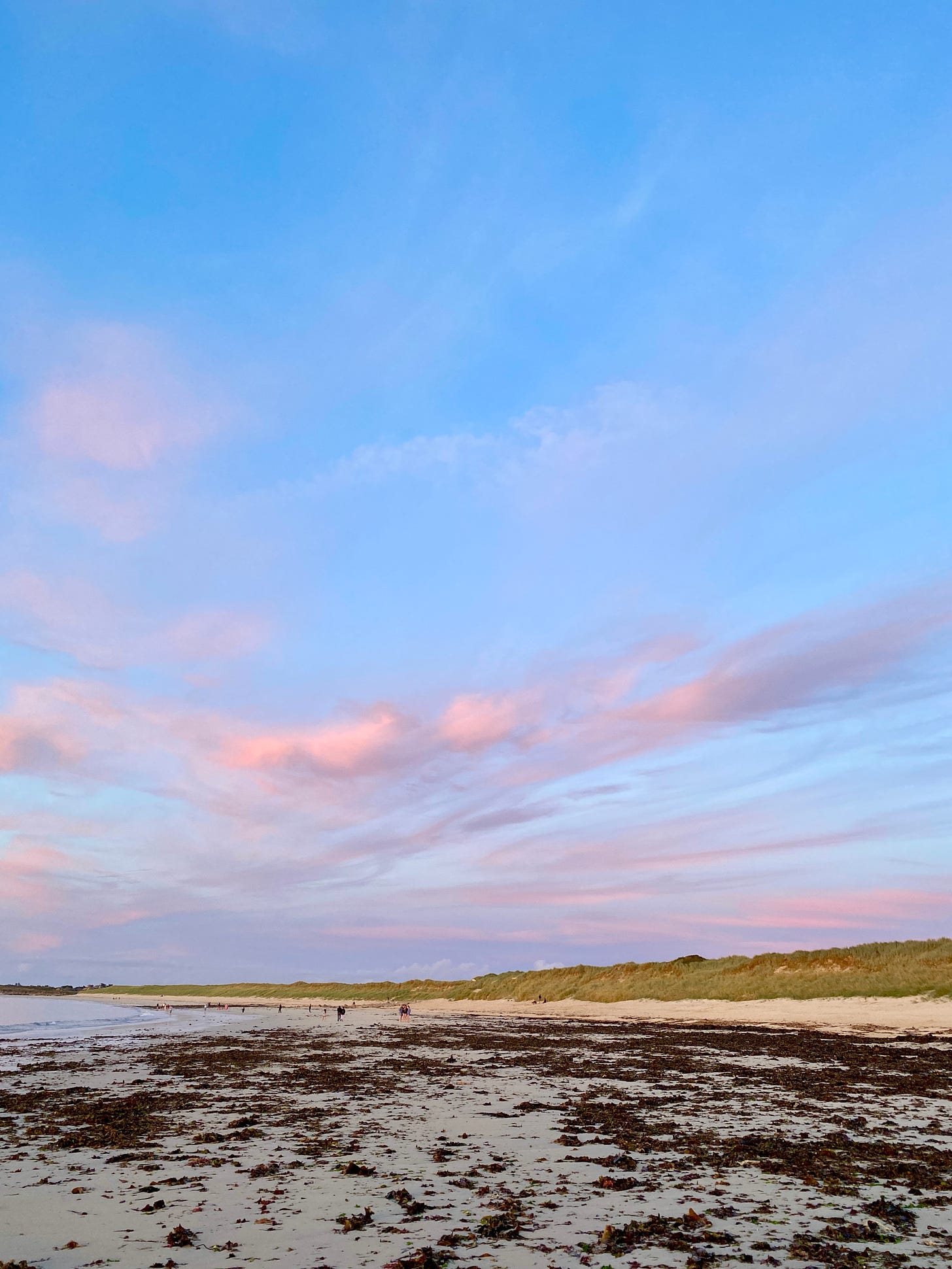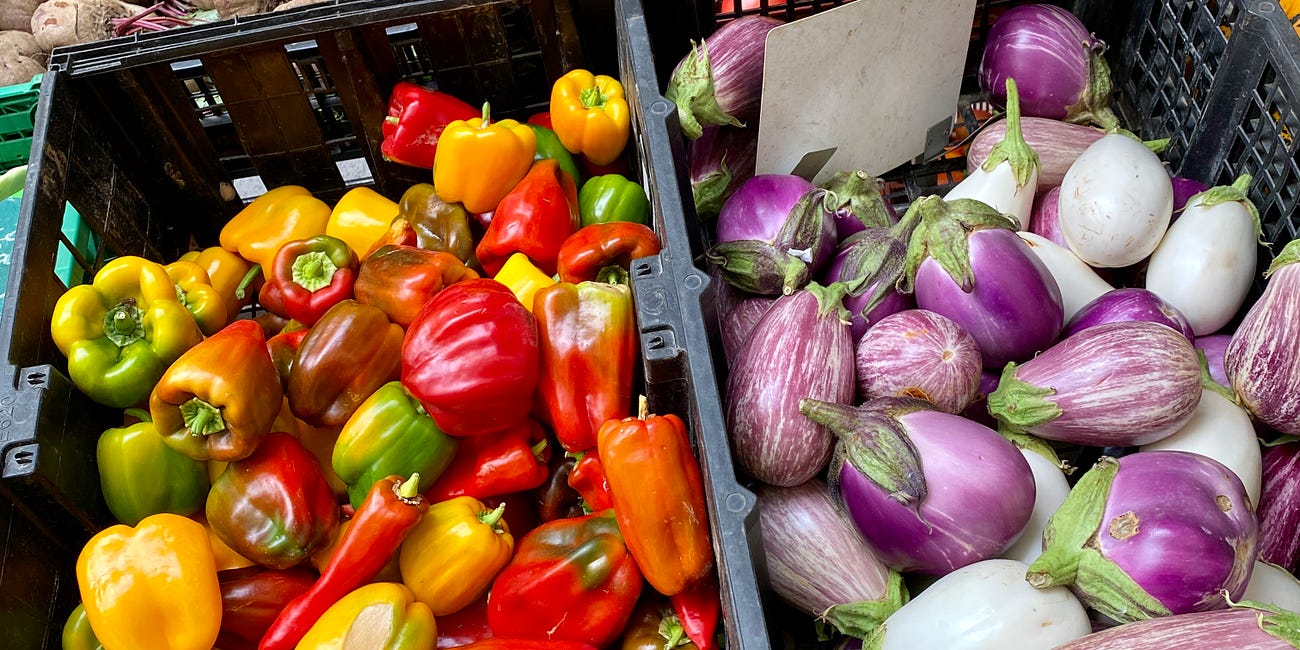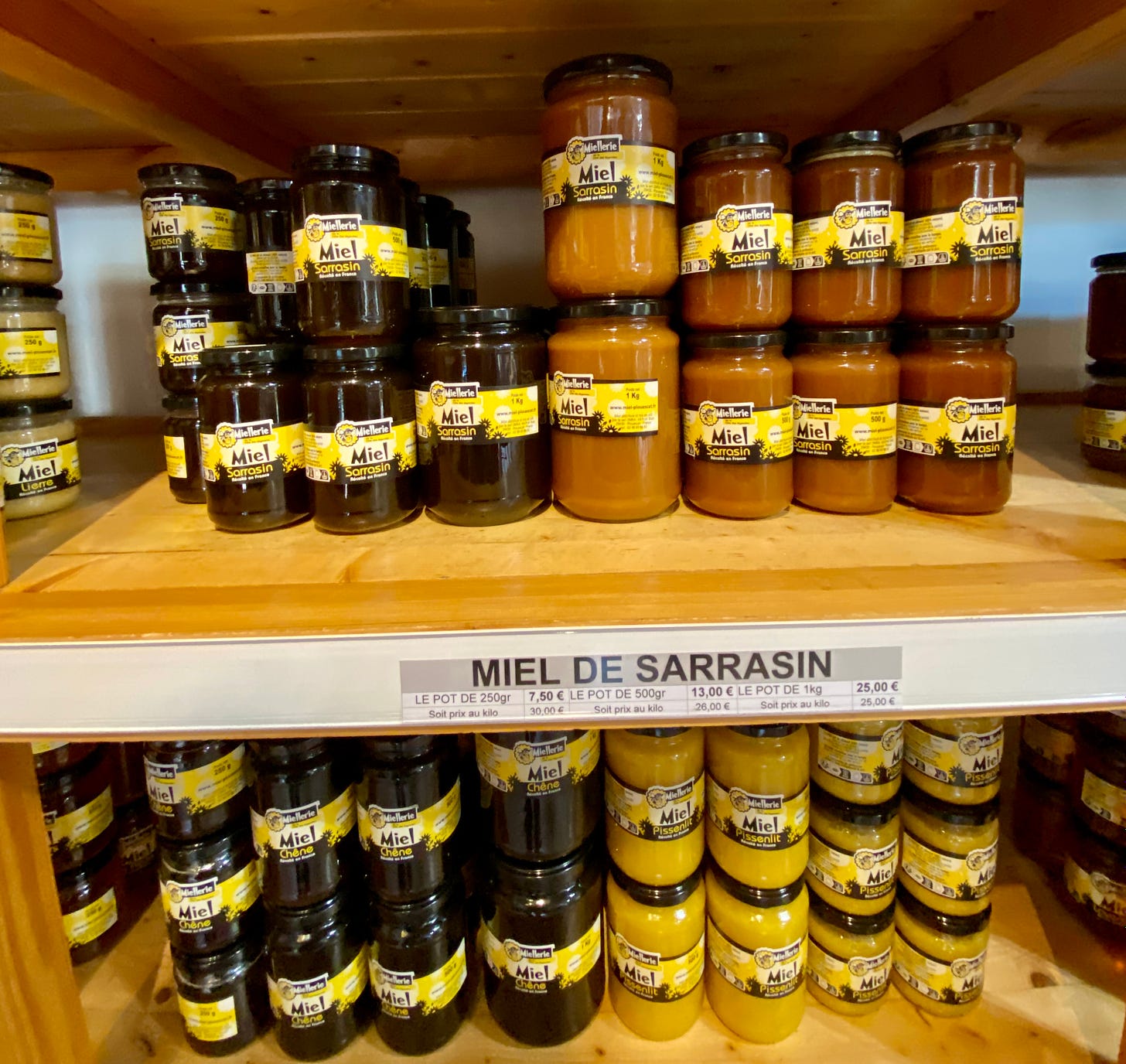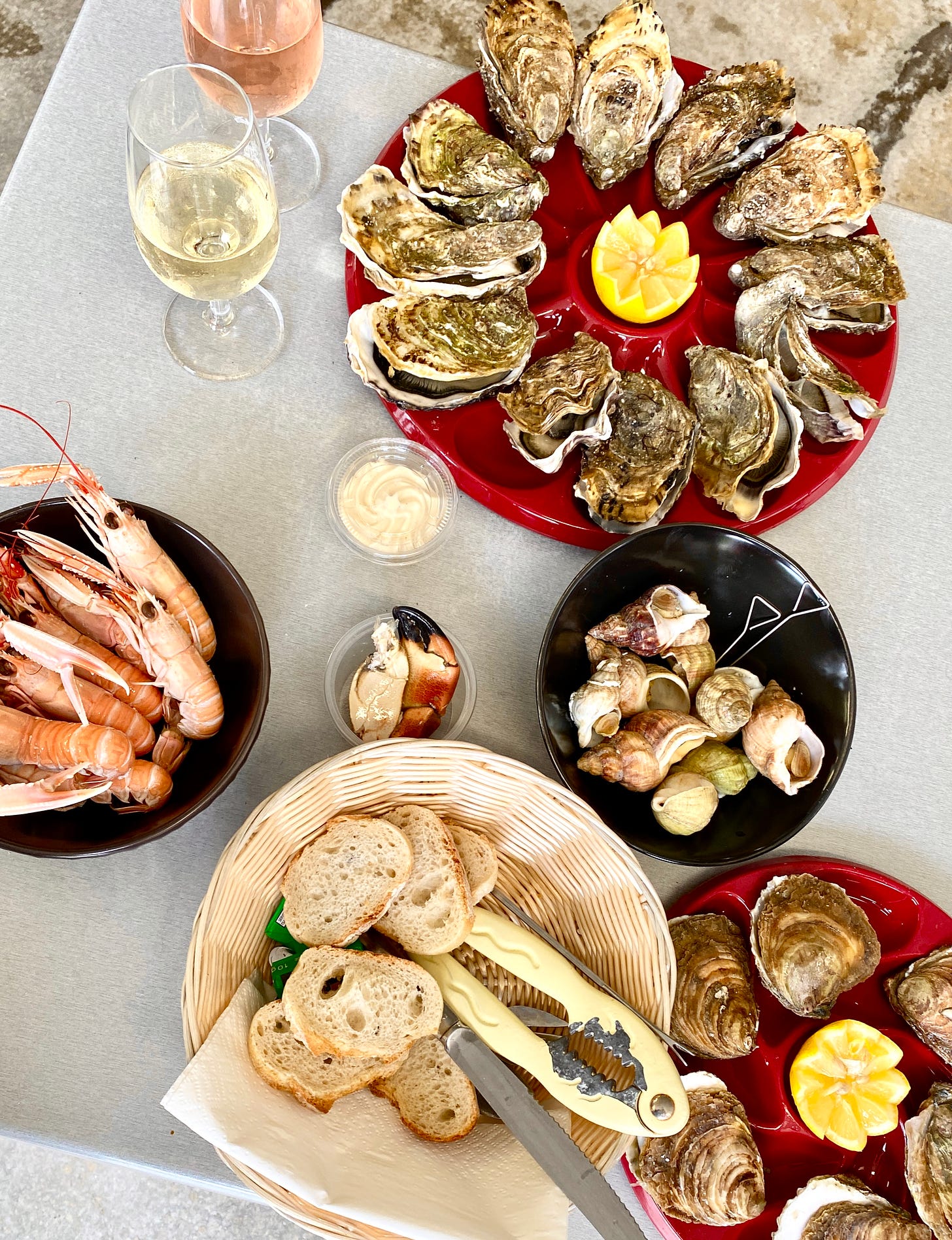Brittany is a popular destination for Parisians, who aredrawn to the generally cool weather, the rugged coastline, the beaches, and in my case, the seafood, crêpes, and pastries.
I’ve written about previous trips to Brittany long ago here, here, and here, but we went back this summer for a visit with some friends and made some new discoveries.
A few notes…
Be sure to reserve in advance anywhere you plan to eat, especially in the summer, on weekends, or during holiday periods. Most places fill up then and if you just walk in, you likely won’t get a table. Calling in advance, even if it’s the same day, is highly recommended. And don’t forget to cancel if you can’t make it.
Brittany isn’t known for its wine; it’s not a winemaking region, nor is it known for its cheeses. Locals often drink sparkling apple cider with meals, which is low in alcohol and available in bottles or pitchers, in doux (sweet) or brut (dry). For those who don’t drink, and for kids, there’s very good apple juice. Wine is available in restaurants and Muscadet, which some people confuse with the sweet white muscat wine, is dry and agreeable and often enjoyed with oysters.
People in Brittany are known for their love of salted butter, which is used in a number of pastries, as well as served with rye bread alongside oysters. If you visit a market, cheese vendors usually sell excellent local butter, demi-sel (partially salted, between 1/2-3%) and sel (with 3% salt). You can’t go wrong with either, but I always go for the sel. Butter is sold in packages or de baratte, scooped off a large mound that’s come right out of the churn (baratte), so you can get whatever quantity you want.
We visited the places here because we were in the region. They’re not necessarily “destinations” — i.e., we didn’t scour the region to find the best galettes or the best Kouign amann, although we all agreed that the one from Maison Henry, listed below, was excellent...even reheated two days later!
Miellerie de La Côte des Legendes: It’s hard to get Americans to be as enthused as the French when it comes to honey…although I can’t say I haven’t tried 😊. French honey comes in a variety of flavors, colors, and consistencies, but the best I’ve had is produced close to the Breton coastline at Miellerie de La Côte des Legendes.
Specialty honeys they cultivate include dandelion honey and honey made by bees that collect nectar from herbs that grow along the coastline, miel des fleurs de bord de mer, which gives the honey a wild thyme flavor. Their very dark honeys are especially close to my heart, my favorite being the brusque buckwheat honey, with miel de fôret and chestnut honey ranking right up there at the top.
Les Viviers de Carantec: One place we hoped to eat while on the road was La Cabane à Huitres. Unfortunately, many places in the French countryside have short opening hours, and La Cabane closed for lunch at a very early 1:30pm, so we couldn’t get there in time.
Keep reading with a 7-day free trial
Subscribe to David Lebovitz Newsletter to keep reading this post and get 7 days of free access to the full post archives.








